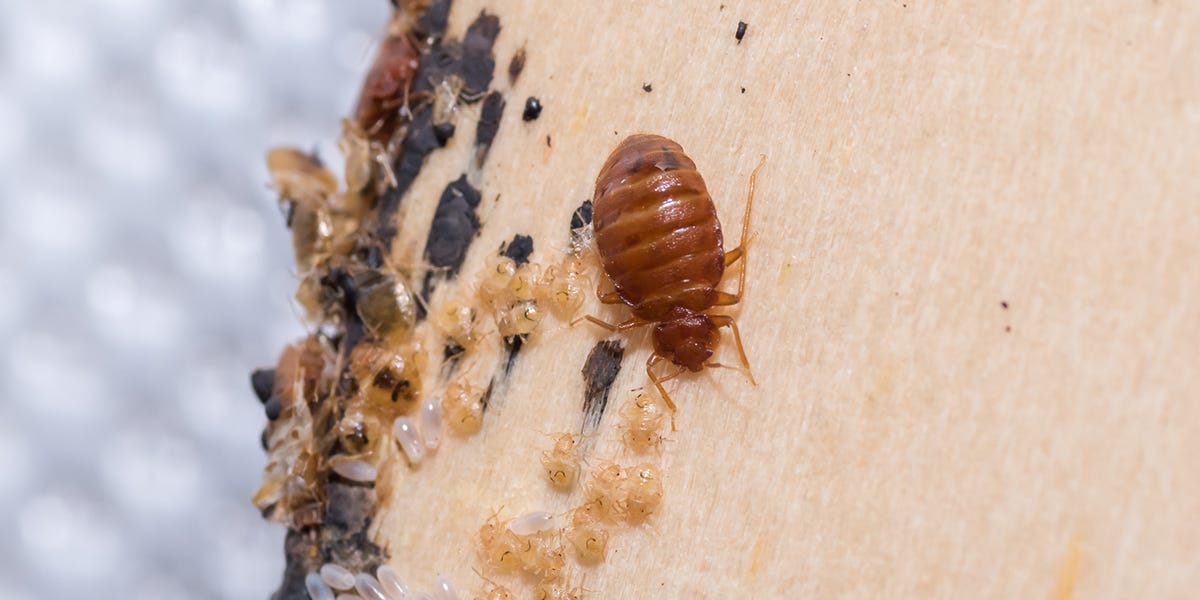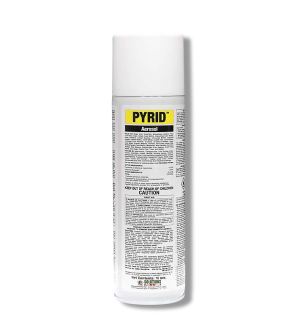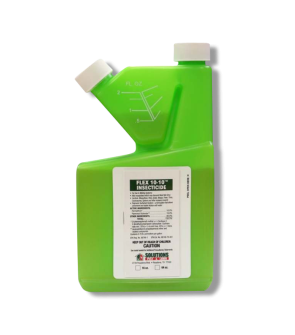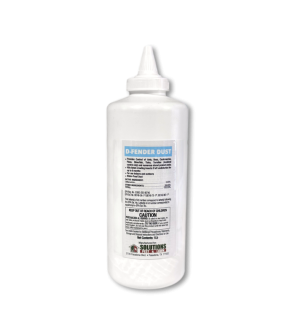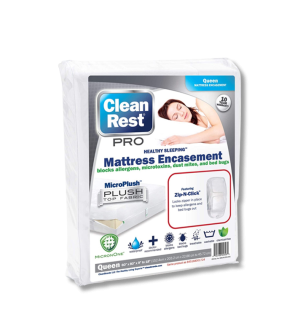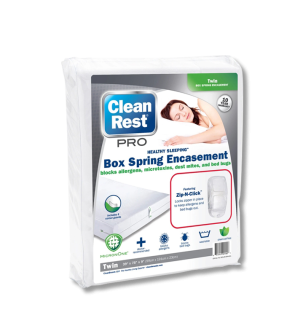Gain access to personalized product screening, the best pricing, rewards, and more!
Most Effective Products
How to Check and Treat Used Furniture For Bed Bugs
This page is a general control guide for checking for bed bugs in used furniture or, in more severe cases, treating them in received secondhand furniture. Follow the associated links and use the recommended products, and we guarantee complete control of bed bugs.
We all love a good deal, whether you find a gently used nightstand or couch while thrift shopping. So, what do you do when you find bed bugs in your secondhand furniture? It's only natural to be alarmed when these pests are found in your used furniture. Their biting activities and ability to hide in the smallest of crevices to escape pesticide treatments make the bed bug one intimidating pest.
What might start off as a small infestation in your home can quickly become a larger population, making these pests difficult to control. And even worse, these pests can become resistant to pesticides. For this reason, look at the tips and products listed throughout this article to help you avoid and control bed bugs in your home when buying secondhand furniture.
What to Use For Bed Bugs Check in Furniture
Be prepared to inspect the furniture or secondhand items with the following tools. By using these tools, you can avoid bringing bed bugs home or into your vehicle. You can also avoid purchasing the furniture and continue your search for good secondhand furniture.
- Wear personal protective equipment (PPE), such as latex gloves. With a glove-covered hand, run it along the fabric, in between and underneath cushions, tufts, seams, folds, and the back, side, and underneath of the furniture without being exposed to the pest.
- A flashlight to better spot the bed bug and signs of this pest.
- Use an old credit card or a flat, thin card to dislodge any bed bugs hiding in these tight spaces. Bed bugs have flat bodies that fit in spaces as small as a credit card.
- A magnifying glass, to better spot any bed bugs, shells, or their eggs.
Signs of Bed Bugs in Furniture
Before you bring your furniture into the house or even consider purchasing it, it's important to check for bed bugs. If any of these signs are present, do not take the item into your home, vehicle, or any other items near it.
- Bed bug bites can cause small, itchy red welts on the arms, legs, chest, back, and other parts of the body.
- Red or black stains appear on furniture, especially in hard-to-reach areas like crevices, sides, backsides, mattress seams, bed frames, and wood frames. Since bed bugs feed on blood from their host, they leave behind small droplets or if they were squished while feeding. As bed bugs move about, they leave behind their feces, which resembles dried blood. Bed bug feces also appear as if someone has taken a marker and drawn several spots with it or dark smears.
- Bed bugs shed their skin as they grow, so look for their skin shells. Inspect the seams on the mattress, chair, couch, cushions, and the space between shelf drawers in nightstands or dressers.
- If you see white spots on the furniture, they could be bed bug eggs or shed skin cells. They are shaped like a grain of rice but smaller and translucent pear white.
- Of course, the pest itself. Bed bugs are incredibly small, wingless, flat, oval-shaped, and brown. Adult bed bugs measure about 5 to 7 mm in length.
What Kind of Furniture Has Bed Bugs
Bed bugs hide during the day and look for people to bite at night. However, they can come out in the morning if you work at night and sleep during the day. These pests hide in various places, including furniture. Common pieces of furniture bed bugs will inhibit are listed below:
- Beds, including sofa beds, roll-away beds, or trundles.
- Bed sheets, mattresses, covers, and pillows. Be sure to check the top and bottom of mattress seams, between the mattress and box springs, and along the edges and tufts of the mattress.
- Nightstands, bed frames, head and footboards, especially between the board and the mattress, dressers, picture frames, and electronics such as outlets, curtains, or ceiling fans are also important.
- Check cracks, crevices, and spaces between cabinets, shelves, carpet, dining chairs, desks, living room couches, baseboards where the carpet meets the wall, and other upholstered furniture. Be sure to check furniture legs, crevices (especially where the upholstery creases and seams), back, and sides.
- Anything hanging on the wall, from picture frames to posters, etc.
- In the closet, look under stored items such as blankets, irons, ironing boards, and other plastic containers or storage items, as well as the closet rack and anything hanging from it.
- Anywhere else that has a space as thin as a credit card.
Things to Avoid When You Have Bed Bugs
If bed bugs are observed in used furniture, consider the following precautions.
- Do not move furniture, clothing, or objects from an infested room to other rooms. Trying to move these items to an outdoor garbage bin will only accelerate the infestation and spread it further into your home or even into your yard. Leave all items in the infested room in their original place until bed bugs are eliminated.
- Never give away infested furniture or sell it to other individuals.
- Avoid using items from an infested area in another part of the home. This also includes adjacent rooms, whether on the side, top, or even rooms underneath the infested level, such as the basement. Bed bugs can attach themselves to the smallest of fibers, from your shoelace to fabric fibers, hence the nickname hitching bug. They may also travel through the shared ventilation between each room.
How to Get Rid of Bed Bugs In Used Furniture
Before treatment, wear the proper personal protective equipment (PPE) to protect yourself against pesticides and pests.
Bed bugs are a serious, fast-acting pest that must be quickly controlled with the following steps: For further knowledge about preventing and controlling this pest, check out our DIY guide to bed bug control.
Step 1: Clean the Infested Area
First, you should clean the infested area where bed bugs have been spotted. This involves vacuuming the floor, the underneath, sides, top, between furniture cushions, curtains, folds of the mattress and bed frame, and especially the mattress and box spring. It would also be best to disassemble furniture, such as the legs, headboard, and footboard, to effectively clean these areas, as bed bugs can hide in the smallest of cracks and crevices.
Once you've finished vacuuming, immediately dispose of the vacuum contents in an outdoor garbage bin several feet away from your home's foundation. Properly sanitize the inside and outside of the vacuum, as bed bugs and their eggs can still harbor in these machines and make their way back into your home.
Place all clothing, bedding, pillowcases, cushions, covers, curtains, linens, clothing, rugs, and other cloth materials from the infected area or rooms in a plastic bag. Leave all items in the plastic bags in the room until they are ready to be washed and dried in your washing machine. We recommend machine washing these items in hot water and drying them on a hot cycle (above 120 degrees Fahrenheit). For other items that cannot be washed, vacuum them and steam them on high heat to kill bed bugs and their eggs.
Step 2: Apply Flex 10-10 and Gentrol IGR
We recommend applying Flex 10-10 to your mattress, bed joints, baseboards, moldings, floors, box springs, and other furniture. Flex 10-10 is a synthetic pyrethroid that provides fast control over bed bugs on the inside and outside of your home. To further control future generations of bed bugs, you will also want to use Gentrol IGR, an insect growth regulator that controls underdeveloped stages of bed bugs, like the eggs and nymphs.
First, You must apply only Flex 10-10 over your mattress, as Gentrol IGR cannot be applied on mattresses.
To perform spot treatments with Flex 10-10 in a handheld pump sprayer at the rate of 3.2 fl. oz. of Flex 10-10 per gallon of water per 1,000 sq. ft. For severe bed bug infestations, you can use 6.4 fl. oz. of product per gallon of water per 1,000 sq. ft.
To mix, fill your sprayer with half the required amount, add the measured amount of product, and pour in the remaining half of the water. Close the spray tank lid and shake until the solution is evenly mixed. Once mixed, apply the Flex 10-10 mixture to your mattress from the tufts, edges, seams, and folds.
After the mattress has been treated, you may apply Flex 10-10 and Gentrol IGR together. To treat 1,500 sq. ft., apply 1 fl. oz. of Gentrol IGR per gallon to the Flex 10-10 solution. Only apply the Flex 10-10 and Gentrol IGR combination to the bed frame, box spring, furniture, closet, flooring, and all along the room's baseboards.
Step 3: Treat Cracks and Crevices
To further treat cracks and crevices, we recommend applying Pyrid Insecticide Aerosol to control bed bugs that may have escaped the spray application. Pyrid Insecticide Aerosol is an insecticide aerosol that will flush out bed bugs from the smallest crevices or eliminate them directly on contact.
This product may be applied to the bed frame, box spring, and furniture within apartments, homes, or other labeled areas. To use Pyrid Insecticide Aerosol as a crack and crevice treatment, replace the white actuator with the red applicator straw and affix the application straw to the nozzle. Make sure all doors and windows are closed when applying this product indoors.
Insert the application straw deep into the joints and channels of beds if hollow, such as the square or round tubing, and see that the interior framework is treated. When bed bugs are found in upholstered furniture, apply only to the infested tufts, seams, folds, edges, and underneath all areas, but DO NOT apply to flat surfaces where human contact will occur.
Apply as a crack and crevice treatment to all bed frames, headboards, box springs, baseboards, moldings, floor coverings, carpets, closets, shelves, curtains, furniture, and picture frames in the room.
Do not allow spray to contact plastic, painted, or varnished surfaces, or directly into electronic equipment such as radios, TVs, computers, etc.
Reapply every 7 to 10 days, as needed, until infestation is eliminated.
Step 4: Treat Voids
Valves that cannot easily be reached in or around furniture, such as wall voids, electrical outlets, along baseboards, upholstery of chairs and sofas, and all cracks and crevices in the room, should be treated with D-Fender Dust. D-Fender Dust is a dry insecticidal dust made with deltamethrin 0.05%, which kills bed bugs by overstimulating their central nervous system, leading to paralysis and eventual death.
Once applied, this product will continue to eliminate bed bugs for up to 8 months. To use D-Fender Dust, you must use a handheld duster like the Pro Blow Handheld Pesticide Duster.
Fill the duster halfway with D-Fender Dust, and leave plenty of room for the air to circulate for proper application. Apply this product in all cracks and crevices, under baseboards, electrical outlets, under furniture, cracks and hollow posts of bed frames, upholstery of chairs and sofas, and picture frame moldings.
Allow D-Fender Dust to remain in contact with chair and sofa upholstery for 4-6 hours. Then, thoroughly vacuum these treated areas and dispose of the vacuum bag. Also, vacuum-treated areas will come into direct contact with humans and pets.
Turn off breakers before applying this product to electrical outlets. Do not apply it as a broadcast to floors and floor coverings in residential areas or directly to clothing.
How to Avoid Bed Bugs in Used Furniture
If you decide to get used furniture, choose wisely and consider the following tips. Consider these bed bug precautions when you take furniture into or out of your home.
- Avoid using furniture from uncreditable stores or sources, dumps, garbage bins, or the side of the road. Furniture thrown away is never worth the risk and is usually discarded for a good reason, which could sometimes be bed bugs. Remember that you do not know why the previous owner threw away that seemingly well-cared-for furniture, but a quick inspection on the side of the road is not very thorough. Also, remember that bed bugs can hide in the smallest of crevices, cracks, and voids in furniture, and wooden frames.
- Upholstered furniture is an ideal location for bed bugs, but they can be very difficult to detect. It would be best to avoid using second-hand furniture altogether.
- Ask the furniture owner if they previously had a bed bug infestation.
- If purchasing used furniture from a store, ask the owner if the items have been inspected for bed bugs and how they go about their inspection processes. Do not simply take the promise of storing the item in a well-conditioned warehouse, as bed bugs can survive up to a year without food. It is highly unlikely that the seller would hold onto furniture pieces for that long before putting them out for sale. Other areas that sellers may use for storage are storage units, which can also be prone to bed bug infestations.
- Leave the used furniture outside of your home until it has been inspected and, if needed, treated with the appropriate insecticide. Vacuum all cracks, crevices, seams, folds, and other hidden areas. Steam all cracks, hard-to-reach areas, seams, folds, and tufts. Remove all cushions and covers from fabric furniture and leave them in a plastic bag until it is ready to be washed or steamed. Carry them in a plastic bag into the home, wash them in warm water, and dry them in the hottest setting. Leave items outside until they are ready to be placed into the washer and dryer, and all other items that cannot be washed, then vacuumed and steamed.
- For further preventative measures, wrap furniture with a plastic encasement such as the Clean Rest Pro Mattress Encasement, Clean Rest Pro Pillow Encasement, and Clean Rest Pro Boxspring Encasement. Each product features a durable plastic cover with a zip-n-lock feature to protect the furniture against bed bugs, stains, and other pests for up to 1 year. If the furniture has been removed from bed bugs but you do not want the item any longer, it can be thrown away from your home with the encasement still around it. Make sure to mark it with clear warnings and arrange for proper disposal.
Key Takeaways
How Long Does it Take to Remove Bed Bugs From Furniture?
- Bed bugs can mature in as little as one month and survive for up to 1 year without food. The amount of time it takes for bed bugs to infest furniture depends on several factors. Bed bugs are more experienced during the summer months. Still, they can occur at any point of the year, especially during the fall when people are traveling more or possibly purchasing used furniture as gifts. They can hide in the small cracks, crevices, and voids during the day but also emerge in these time frames if the host sleeps more in the day than at night.
Can Used Couches Have Bed Bugs
- Secondhand furniture can support bed bugs because it provides the tight cracks, crevices, seams, tufts, and voids needed for them to hide until they are ready to come out and feast.
How to Prevent Bed Bugs in Used Furniture
- It's best to thoroughly inspect secondhand items before buying them or bringing them into your home or vehicle. Never bring furniture from the side of the road or dumpster without knowing the item's history.






